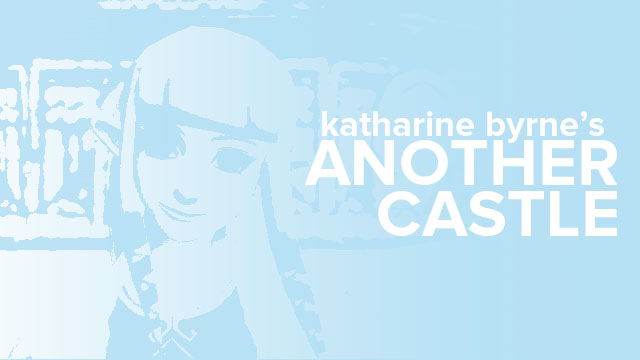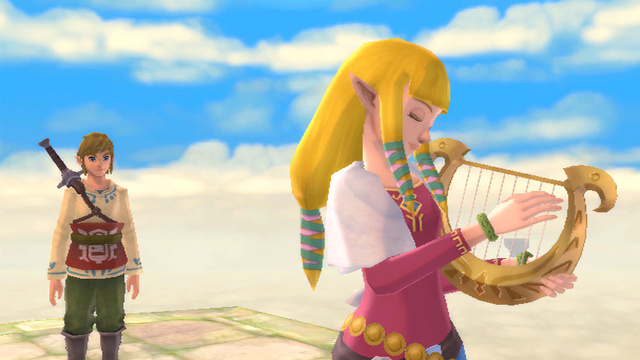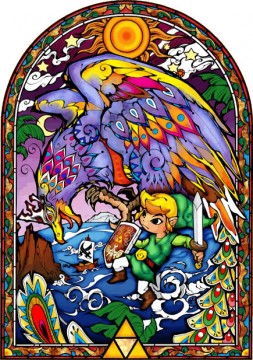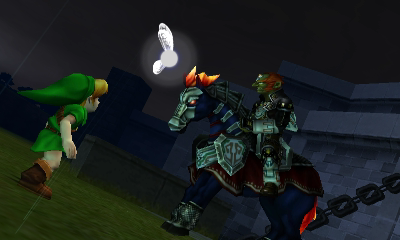 One of my university professors once told me that popular fiction is often dismissed by the literary establishment because it’s too formulaic. It adheres to long-dictated patterns of plot and characterisation, and it’s a genre which, as a whole, changes very little over time. The audience it caters for both want and expect certain things from it– something she called an “aesthetic of the familiar”– and because it never dares to breach its tight structure and rigid conventions there’s usually very little merit in trying to take the genre seriously.
One of my university professors once told me that popular fiction is often dismissed by the literary establishment because it’s too formulaic. It adheres to long-dictated patterns of plot and characterisation, and it’s a genre which, as a whole, changes very little over time. The audience it caters for both want and expect certain things from it– something she called an “aesthetic of the familiar”– and because it never dares to breach its tight structure and rigid conventions there’s usually very little merit in trying to take the genre seriously.
But my university professor wasn’t your ordinary breed of academic. In fact, popular fiction was one of her specialities and she took it very seriously indeed. Over the course of ten weeks, I quickly learned that there’s a lot more to popular fiction (and Middle English romance) than I’d previously given it credit for, and it was probably the single most informative class of my entire university life. Despite the fact it also had the unfortunate timing of being my final university class before I graduated, she made me realise that even the most traditional and seemingly unremarkable stories have something to say, no matter what type of media they belong to. Of course, a primarily medieval literature module wasn’t ever going to include video games alongside our discussions about chivalric romances and pulp fiction westerns, but I think her comments would be equally applicable to the state of gaming today. Substitute “popular fiction” for “video games” and “the literary establishment” for “the public” (or simply “the establishment”), and you’ve more or less got one of the most common misconceptions about our dear medium available.
And that’s where Another Castle comes in. This column aims to take a closer look at the stories behind our favourite video games, exploring where they succeed and fail, as well as how they’ve begun to liberate themselves from within the confines of the so-called “formula.” I wouldn’t be playing games today if I hadn’t been drawn in by their tales of kidnapped princesses and ransacked kingdoms, so if popular fiction can be worthy of academic scrutiny, then video games most definitely can as well.
To kick off the first column, I want to look at an issue I raised in my Legend of Zelda: Skyward Sword review. As much as I loved the game’s innovative use of motion controls, I said that its story was actually what let it down the most, and that Link and Zelda’s relationship wasn’t quite robust enough to carry the first half of the game all on its own. As touching as it was, it just didn’t quite cut it as an effective force of narrative desire, and looking back on at that particular choice of words, I’d like to go into a little more detail about what I meant. I’ll say now that I’ll be discussing the ins and outs of Skyward Sword’s story (as well as other Zelda games) in quite some detail, so if you haven’t played or completed the game yet, then you’ve been duly warned.

When you break it down, most stories are essentially about one thing: the fulfilment of desire. Whether it’s saving the world or simply getting back your hoard of bananas, there’s often a lack or absence of something that must be recovered or acquired, and the ensuing narrative will then create a series of problems and obstacles to thwart the protagonist in obtaining that desire, with the story only coming to a close once that desire has been obtained.
It’s a time-honoured narrative tradition that’s used across all forms of media, and video games are no exception. The title of this very column comes precisely from this kind of idea– just when you think your beloved princess is finally within your grasp, you enter a room only to find that there’s someone else there waiting for you. Disappointed and bewildered, you edge forward and hope it’s all been some kind of mistake. But then this stranger tells you– in the nicest possible way– that, sorry Mario, she’s actually in another castle. Those few words create an obstacle in the narrative, and the continuing absence of Princess Toadstool maintains the story’s force of narrative desire. They make you think, well, maybe she’s in the next one. So you go out and stomp some more goombas, but the same thing happens at the end of the second castle and the cycle repeats again until you reach the eighth and final castle where you’re finally reunited.
Now, truth be told, Link’s desire to save Zelda in Skyward Sword has never been stronger compared to previous games in the series. She’s no longer the aloof princess we meet just once before getting thrown into the rest of our adventure, but a close childhood friend of our hero who’s both playful and endearing (despite her unhealthy penchant for repeatedly pushing Link off a cliff). We’re actually given the time to like her during the opening hours of the game, and while the slower pace might ultimately detract from the overall momentum of the story, Skyward Sword does give us plenty of reasons why we– and Link– ought to go out and save this girl. These are two young people caught up in the throes of young love; they look out for each other and write each other letters, they delight in each other’s flaws and habits, and they do their best for one another, always willing to go that extra mile for each other’s happiness.
But while the first couple of hours lead us merrily along in their relationship with a plentiful supply of breadcrumbs, the trail goes stone-cold the moment Zelda gets knocked off her loftwing and disappears into the wild unknown. We have our “absence” of Zelda to get the story moving, no doubt about that, but the game’s subsequent design choices actually leave us with a relatively weak force of narrative desire to drive the story forward, as if a black hood has been pulled over its head and it’s been bundled off into the nearest dungeon never to be seen again.
 By way of contrast, think back to the opening scenes of The Wind Waker. Much like Zelda in Skyward Sword, Link’s sister Aryll gets kidnapped by Helmaroc King and becomes the focal point of the game’s early narrative desire. But unlike Skyward Sword, Wind Waker gives you a clearly defined goal– the Forsaken Fortress– and tells you that’s where Aryll is being held. With that information in hand, you set off to save her, but just when you think victory is in your grasp, Helmaroc King swoops in and hurls you away to who knows where. In a way it pulls a very similar stunt to Super Mario Bros., but it goes one step further and teases an even greater reason to go back there– the return of Ganondorf.
By way of contrast, think back to the opening scenes of The Wind Waker. Much like Zelda in Skyward Sword, Link’s sister Aryll gets kidnapped by Helmaroc King and becomes the focal point of the game’s early narrative desire. But unlike Skyward Sword, Wind Waker gives you a clearly defined goal– the Forsaken Fortress– and tells you that’s where Aryll is being held. With that information in hand, you set off to save her, but just when you think victory is in your grasp, Helmaroc King swoops in and hurls you away to who knows where. In a way it pulls a very similar stunt to Super Mario Bros., but it goes one step further and teases an even greater reason to go back there– the return of Ganondorf.
Even more importantly, you then learn that the only way of saving your sister is to defeat Ganondorf, and to do that you must find the Master Sword (which in turn requires the three pearls). No matter what subsequent objective Link undertakes, each one is framed in a way which supports his first and most important goal: saving his sister. Everything you do is for her, and you’re constantly reminded of that throughout the game.
Skyward Sword, on the other hand, isn’t so generous with its initial pacing. While its story objectives are almost identical (rescue Zelda and restore the Master Sword so you can meet her again in the Gate of Time), you have no clear destination when you first arrive on the Surface world. You wander around from place to place with only Fi’s occasional “Zelda may have been here” deductions to guide you (which all but peeter out during the second act), and it all starts to become a somewhat unlikely game of cat-and-mouse. Even when you do finally catch up with Zelda in Lanayru Desert, you still don’t really know where she’s gone when she steps through the Gate of Time, and when your end game becomes less and less tangible, the narrative can’t help but begin to lose some of its initial drive and momentum.
Even Lord Ghirahim is similarly tight-lipped when it comes to sharing any more information. When you first meet him in Skyview Temple, he simply tells you that Zelda is the only thing that matters to him, and that “we [whoever we may be] plucked her holiness from her perch in the clouds and now she’s ours”, or at least would have been if some “loathsome servant of the goddess” hadn’t snatched her away first. He spills the beans a little more in the second temple, revealing that he “must have the spirit maiden in order to resurrect [his] master”, but all in all none of this really means anything in the grand scheme of the narrative.
Despite having no idea why he’s calling Zelda “her holiness”, we can guess that she’s going to be important because, you know, she’s Zelda, and for all his talk of murder and torture, Lord Ghirahim actually poses very little long-term threat to Link because you go ahead and defeat him in the very first boss battle. This isn’t Phantom Ganondorf from Ocarina of Time— this guy’s the real deal, and straight away you’re able to demonstrate your superiority over him. Remember how powerless you felt when Helmaroc King tossed you over the horizon, or when Zant turned you back into a wolf and almost killed Midna in Twilight Princess? That sense of helpless vulnerability was crucial to kick-starting another wave of narrative desire in those games because not only did you have someone to save, but those moments of crippling weakness also gave you someone to defeat along the way. With Skyward Sword, however, we see Link successfully face off against the final bosses multiple times throughout the narrative and the seeds of revenge are only sown when Ghirahim captures Zelda in the very final moments of the game.

You felt on top of the world with the three Sacred Stones in your pocket, but Ganondorf soon crushed what little childish optimism you had left when you returned to Hyrule Castle.
The culmination of Skyward Sword’s first act also left a lot to be desired. With Zelda now completely beyond our grasp and still no show from Demise, any other Zelda title would have filled this temporary lull in the story by introducing another, more pressing thread of narrative desire. Ocarina of Time, for example, not only made us feel completely powerless when we had to watch Zelda ride off into the distance, but it also brought Ganondorf to the height of his powers. Everywhere you went in Hyrule was full of reminders about how awful it’s become in the intervening seven years, and everything from the monstrous invasion of your home to the Goron and Zora genocides made you that much more determined to put a stop to Ganondorf’s tyranny once and for all. Likewise in Majora’s Mask, the ever-increasing proximity of the moon’s unsettling and terrifying glare (not to mention the ever-downward spiral of Clock Town’s main theme) was more than enough to drive home the impending doom of the apocalypse.
But Skyward Sword didn’t present us with any such urgency in its lengthy second act when Link set about restoring the Master Sword. We knew Zelda was safe and that Ghirahim was still nothing to worry about, and the Surface also showed no signs of deteriorating from its positively idyllic and peaceful nature despite Ghirahim’s supposed plan to resurrect the greatest evil the world’s ever seen. Everything remained entirely constant, and the only things that kept the plot moving were the ensuing number of dungeons and lengthy bouts of exploration.
Then again, this is arguably what the original Legend of Zelda thrived on– you were free to explore the dungeons at your own pace with no real threat to urge you forward, the world of Hyrule remained constant throughout, and Zelda’s whereabouts were just as unknown and shrouded in mystery until you restored the Triforce of Wisdom and found the entrance to Ganon’s lair. At the same time, however, let’s not forget that Nintendo of America originally thought that players might become frustrated by this non-linear approach, so much so that they resorted to including hints and tips in the instruction manual to help give players a little direction.
 Of course, that’s not to say Skyward Sword‘s story was all bad. The finale, however brief, was absolutely thrilling once Ghirahim got his act together, and when those hoards of near infinite moblins came charging toward you in the Sealed Grounds, Zelda’s fate never seemed more desperate. Despite borrowing heavily from the final moments of Ocarina of Time, that’s exactly what an effective injection of narrative desire can do to an ailing story.
Of course, that’s not to say Skyward Sword‘s story was all bad. The finale, however brief, was absolutely thrilling once Ghirahim got his act together, and when those hoards of near infinite moblins came charging toward you in the Sealed Grounds, Zelda’s fate never seemed more desperate. Despite borrowing heavily from the final moments of Ocarina of Time, that’s exactly what an effective injection of narrative desire can do to an ailing story.
Likewise, I’d be lying through my teeth if I said I didn’t almost cry during the reunion scene(s), and Zelda’s true identity as a reincarnated Hylia also posed several interesting questions about the nature of her relationship with Link. Similarly, Link’s progression from “late and lazy” to true hero was one of the most thoughtful character arcs he’s ever seen during his twenty-five year tenure as Hyrule’s protector, and Impa’s role in nurturing Link’s courage both sides of the time divide could be a whole future column in itself. In fact in terms of characterisation, Skyward Sword is undoubtedly one of the most sophisticated games in the entire series, but it’s main downfall ultimately lies in its poor pacing. Had Skyward Sword remembered a little more about what made the previous stories of the franchise so exceptional, it really would have flown through the roof of Zelda’s narrative history.




 ShareThis
ShareThis







I agree totally with this. They did a great job in the beginning and then almost no interaction between them. It felt very disjointed.
I beat the game just yesterday and i have to say you are totally right, the story elements in the first part of the game are great, they give you the motivation to go and save zelda, but after that the motivation is non existing, you felt like if link is not on a journey to save his beloved one, but like he is only on a training. Also i didn’t like the antagonists this time, nor girahim or demise, of girahim we do not know anithing ,just he is a demon lord, he doesnt have a background or a purpose ( well, just to awake his master) and we dont see demise in the entire game, and by the time we fight him at the end of the game he doesn’t seem that bad at all, hes just like ” oh link you are the coolest human because you have the courage to fight with me”. The cinematic sensibilities are there but i think the storyline in ocarina of time is much better than in Skyward Sword. the gameplay here is superb and beats ocarina of time but this is another topic.
This was a phenomenal read. Keep it up, Katharine!
I personally had other issues with Skyward Sword – ones which I would love to encapsulate into writing someday soon – and your deep look into the wanting narrative and lack of direction has asphalted my views even further. I know it’s not popular to speak against where the game shines dimmest, and I applaud you for taking the first attempt I’ve seen.